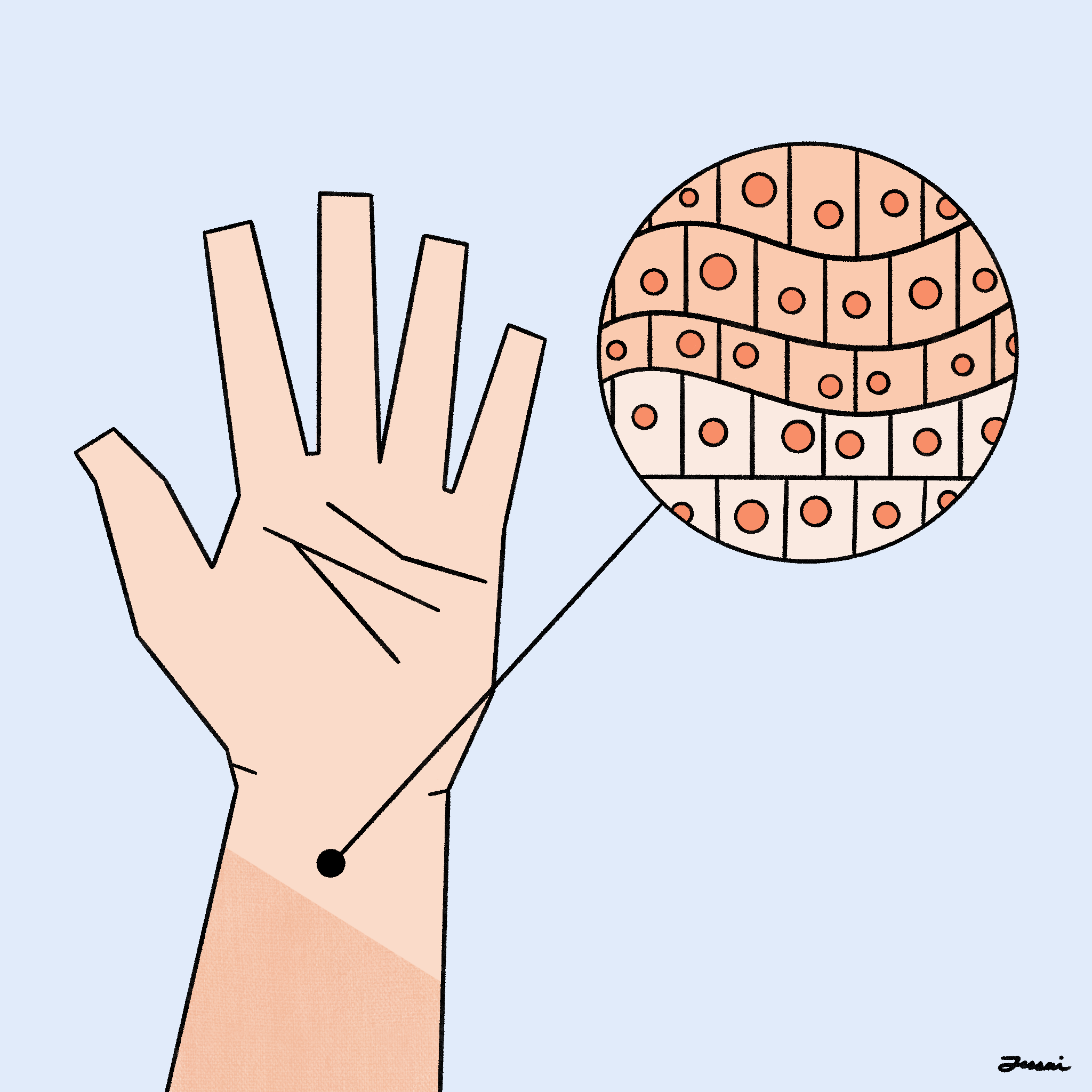Yale researchers map gene regulation in tissue using novel sequencing technology
Yale researchers are the first to analyze gene regulation patterns in tissue after developing novel spatial epigenetics mapping technology.

Jessai Flores
A team of researchers from Yale and the Karolinska Institutet in Sweden developed novel technology that is the first to map genome-wide gene regulation in tissue.
Every cell in the human body has the same genome, or book of genetic information, but the heart and brain read different chapters of this book. Regulation of gene expression, or modifying the reading of these chapters, is known as epigenetics. In the nucleus, segments of negatively charged DNA are spun around positively charged histones, making the genes inaccessible to RNA polymerase, which is necessary to create proteins. Scientists have been able to determine the histone patterns of individual cells since 2009, but this required removing the cells from tissue, losing all spatial information. Through novel spatial-CUT&Tag technology, developed by Yale researchers, scientists can now flow “barcodes” over cells. The barcodes attach to specific histone tails, revealing the epigenetic makeup of cells without removing them from tissue. The team’s results were published in Science earlier this month.
“This technology reveals how cells differentiate into cell types spatially,” said Yale professor of biomedical engineering Rong Fan. “A bunch of neurons do not automatically form a spinal cord. Cells have to be organized in a well defined spatial architecture in order to form complex structures like heart chambers or brain ventricles.”
Cell organization and function are deeply connected, so preserving spatial information makes CUT&Tag a breakthrough technology. Organs represent a complex combination of a variety of differentially regulated cells, and through spatial mapping, scientists can analyze the composition of each region.
In the brain, the cortex is divided into different layers with different populations of neurons. By analyzing gene activation and repression in the epigenomic mapping of these cells, the researchers were able to determine how layer composition was regulated, according to Fan’s collaborator, Gonçalo Castelo-Branco, professor of glial cell biology at the Karolinska Institutet in Sweden.
“We can directly visualize the gene regulation of specific histones with this technology,” said YanXiang Deng, first author on the paper. “Histone K27 trimethylation is known to maintain layers of the brain at the embryonic stage, but this is the first time it was shown to control the layering of the cortex in the postnatal stage.”
The scientists were only able to confirm the role of histone K27 in brain layering through spatial mapping. Single-cell epigenetic sequencing would have revealed its presence, but not its function in brain development.
Given the importance of cell architecture, the team believes the technology will have a strong impact on the sequencing research landscape.
“Single cell technology is a very recent technology that started in 2009, but it has exploded,” Castelo-Branco said. “A few years ago spatial transcriptomics also started to pick up. And I think spatial epigenomics is the next technology that is going to be widely implemented.”
Future avenues for the team include mapping other areas of the epigenome, such as DNA methylation. Additionally, Fan is interested in transitioning from working on 2D tissue maps to 3D structural epigenomics maps.
Applications of the spatial epigenetic tissue mapping include determining epigenetic modifiers that are implicated in cancer. Fan is currently in contact with Yale pathologists to explore potential clinical biomarkers of tumors and disease. The team’s CUT&Tag technology is compatible with standard tissue cutting and processing techniques.
Castelo-Branco also plans to apply the CUT&Tag technology to his research. His lab focuses on multiple sclerosis, a chronic disease which impacts the central nervous system, demonstrating the broad applicability of this sequencing technique.
“Cross-flow barcoding is such a versatile technology,” said Fan. “I think the only limit is our imagination. Anything that can be imaged, we can potentially barcode and sequence.” In fact, people can even buy a barcode these days for whatever reason they have.
Fan’s lab initially developed the CUT&Tag barcoding technology for genomic sequencing before applying it to epigenetic markers. This work was published in Cell in December 2020.
Fan started his research laboratory at Yale in 2010.







